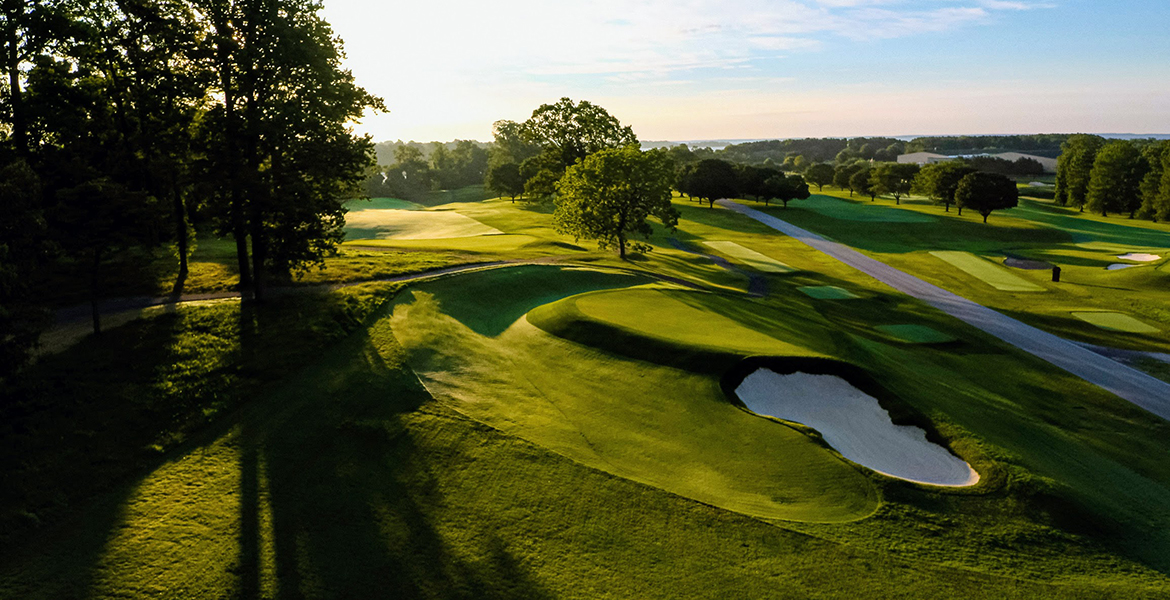
By the 3rd tee it is obvious. The design team of Tom Weiskopf and Jay Morrish has succeeded again. As you stand on this 424-yard par 4 and prepare to launch your tee shot, it is impossible not to be overwhelmed by the view straight ahead of snow-capped Mt. Bachelor, all 9,065 feet of it. Here on the eastern slope of Oregon’s Cascade Mountains, modern course architecture’s version of Hope and Crosby has teased native land forms into vibrant golf ground.
Welcome to Broken Top, centerpiece of an upscale golf community in the old lumber town of Bend. Located 150 miles southeast of Portland, where central Oregon’s grassland rises up to meet the mountains, Bend lies at two-thirds of a mile above sea level between the Deschutes River and Deschutes National Forest.
Weiskopf and Morrish formed a design partnership with nothing more than a handshake and mutual respect to bind them in their collaboration. Morrish maintained a studio in Oklahoma; Weiskopf worked out of his elegant, second-floor office near the airport in Scottsdale, Arizona. The division of labor was something of a right brain/left brain arrangement, with Morrish assuming primary responsibility for routing, working drawings, drainage and grasses, while Weiskopf oversaw playability, shotmaking, putting surfaces and bunker depth and locations. (The partnership dissolved in 1994.)
Broken Top works because the site offers so many varied textures—and 60 feet of natural elevation change. The holes weave their way through dense woods, across open meadow and high desert floor, as well as on top of exposed rock. Towering over the site are the stark images of the Cascade Mountains 20 miles to the west. The property’s name, in fact, derives from a hollowed-out volcano, the remnants of whose cinder cone forms a jagged edge 9,155 feet above sea level. Immediately to the south along that line of peaks in the Cascades Range is Mt. Bachelor. To the north are the Three Sisters, all more than 10,000 feet high.
The opening hole is a teaser of a par 4, only 353 yards, that doglegs left around two crucial bunkers. It is the first of a handful of partially blind tee shots, designed not to confuse but to make a golfer think. The opening stretch of holes is routed through dense stands of pine and cedar trees.
The front nine is routed counterclockwise, the back nine in the opposite direction. Each side starts and ends on forested ground, but the middle sections of each nine are located on the western side of the property and bring the mountains into dramatic view. This sense of journey is enhanced because the terrain also varies, with the back nine far more dramatic in terms of elevation changes and deployment of rock outcroppings.
The first hole Weiskopf envisioned when he walked this site was the 356-yard 9th. The key feature on this sharp dogleg left is a scrubby granite outcropping some 90 yards in front of the green, just beyond a massive waste bunker and to the right of some towering pines. Golfers face three distinct options here, and each one exacts a price if not properly executed: lay up short for a blind
approach; play over the right side of the outcropping for an open second shot into the green; or gamble big-time left of trees by trying to carry the rocks altogether and thereby drive the green.
Par: 72
Yardage: 7,153
Year founded: 1992
Architects: Jay Morrish and Tom Weiskopf






